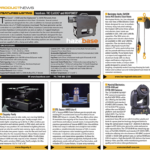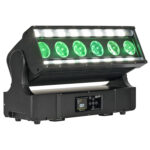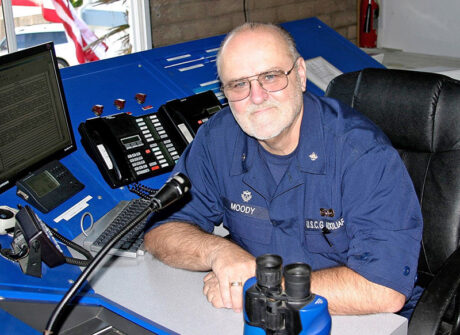
Designer James L. Moody died on Monday, Feb. 20, 2023, at the age of 80. Lighting Designer for concerts, television, and theater as well as a professor, lecturer, author, and mentor, Moody had an amazing and varied career that influenced many throughout the live entertainment industry.
Owner of Sundance Lighting, Moody liked to keep a hand in, continuing working and mentoring until the end of his life. In 2017, he retired as a Professor and Head of Technology & Design from the Theatre Academy at Los Angeles City College, which he had been at since 2002. He didn’t sail off into retirement however; in 2019 he teamed up with Kinetic Lighting, Inc. as a consultant focusing on the company’s education forums and outreach. A fitting role as he brought 50 years of experience in the lighting industry as a USITT Fellow, company owner, international lighting designer, author, and educator, all while embracing his dedication to mentorship. While at Kinetic, he produced the Conversations With… a series where high school and college students spoke with industry professionals who shared how they got into the business and answered questions from students about their careers and focus within the profession.
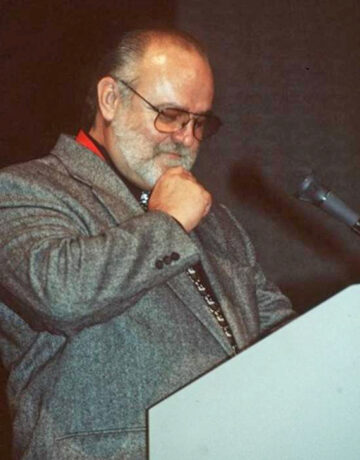
Honors, Recognitions & Sharing Knowledge
Moody was a member of the Academy of Television Arts and Sciences and served on the Technical Production Committee. He was also certified as a Director of Photography with IATSE Local 600 in Hollywood. Moody was a member and a Fellow of the United States Institute for Theatre Technology (USITT) and had been Vice Commissioner for Lighting Design. In 2003 he received the Joel E. Rubin Founders Award for outstanding contribution to the institute. In 2014, Southern Illinois University (SIU) presented Moody with its Distinguished Service Award, stating: “This passion for education and his continued love of SIU shows in the SIU scholarship he established for graduating seniors or graduate students: The Jim Moody Award for Excellence in Lighting Design.” He was also the inaugural winner of the Performance Magazine Concert Lighting Designer of the Year Award in 1980. He received recognitions also from The American Society of Lighting Directors and the Los Angeles Drama Critics Award and was Las Vegas Designer of the Year in 1982.
His concert lighting credits include working with Stevie Wonder, The Supremes, Rod Stewart, Frank Zappa, Barry White, Linda Ronstadt, John Denver, Andy Gibb, Smokey Robinson, Donny and Marie Osmond, The Beach Boys, The Eagles, David Bowie, and many others. Moody is acknowledged by many in the industry as being a concert lighting pioneer for his work in the industry evolving concert touring days of the 70s and 80s .
Moody, dedicated to mentorship and sharing knowledge, often wrote for many of the industry magazines as well as authored and co-authored several books, including: Concert Lighting: Tools, Techniques, Art, and Business Fourth Edition, a textbook now in its fourth edition that came out in 2017. [The third and fourth editions were co-written with Lighting Designer Paul Dexter.] His book, The Business of Theatrical Design is in its second edition, and in 2021 he wrote Lighting For Televised Live Events with his friend and former Moody Ravitz Lighting business partner, Jeff Ravitz.
“Jim is a terrific designer, and he’s done it all,” said long-time friend, Lighting Designer Jeff Ravitz, at the time of publication of their book. “He’s done theatre, television, events, and spectaculars. He’s also been an equipment vendor and business owner. He understands design from the inside out, and his instincts are sharp and creative.”
Career Path
James LaRoy Moody was born April 25, 1942, in Joliet, IL. In high school, he sang in choirs and performed in musicals before majoring in advertising at Bradley University in Peoria. Yet by Christmas of his freshman year, he knew he was in the wrong place, so he dropped out and signed up for a stint in the Air Force. The year was 1960, and he would be assigned the intense, pressure-cooker position as an air traffic controller.
Once out of the Air Force, Moody went to Southern Illinois University in Carbondale to study English but got distracted by theater. A visiting professor, Sam Selden, decreed that Moody would be good at it. “Study lighting,” he advised. After graduating SIU in 1967, Moody went to UCLA to study lighting, and there he met Willy Crocken, who was the school’s Technical Director at the time. When he graduated in 1969 with an MFA, Moody was offered the TD position at Valencia, CA-based California Institute of the Arts (CalArts), but Crocken advised against it and would steer him to a job at Berkey Colortran working for Joe Tawil, who would become a mentor to Moody.
For the next several years, Moody lived large: playing with the “toys” the lighting manufacturing company produced by day, and lighting shows at night. Moody said it was the best-of-both worlds scenario. Thinking about those early days of concert production, he stated that “it was a simpler time—there wasn’t as much competition!” Not necessarily by design, but five lighting giants emerged in the early 1970s coinciding with the growth of big concert tours. Moody, Bob See, Bill McManus, Tom Fields, and Chip Monck each were working their respective regions of the country.
Rather than doing a lot of concert touring, Moody let the tours come to him. He got hired as the Lighting Designer for Hollywood’s Palladium, covering rotating concerts of the biggest acts of the time including Joe Cocker, Rod Stewart, ABBA, Grateful Dead, among others. Often with no set list provided, yet not content to wing it, Moody listened to the albums of the band he was about to light to get a feel for tempo changes and where solos were placed, and then rely on his own experience to run the show. His years in the military working the air traffic control tower also came in handy. “I didn’t get flustered. It was key, frankly, to my success.”
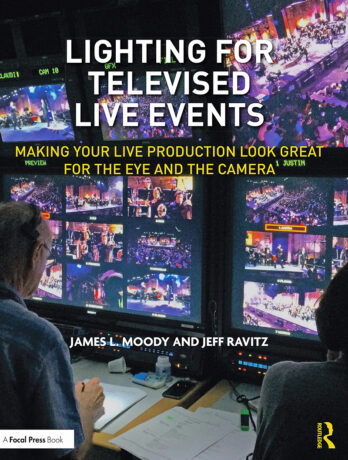
TV, Technology & Teaching
When the lights came up on Sept. 27, 1973 on TV’s Don Kirshner’s Rock Concert, Moody was behind the board. “I worked with virtually every band there was for seven years,” he says.
Moody continued working on a variety of TV shows including Entertainment Tonight, Jeopardy! Wheel of Fortune, and Hard Copy. All told, Moody worked on more than 6,000 hours of television programming. His efforts led to two Emmy nominations and a team Emmy award.
Throughout his career, Moody had always been quick to embrace technology. When computers started to come into play, he latched onto them and ignored the disdain he got from other LDs. “I’d get ragged on about how a lighting show needs [to be organic], needs to be created on the spot every night, and I’d say, ‘Bull—-! It’s about giving the artist the same thing every night!”
“I’ve learned so much from Jim over the years,” says Ravitz. “His strong suit is knowing how to keep it simple, so the design doesn’t get in its own way. Whenever I find myself overcomplicating a design or cue, I channel Jim’s design brainwaves and get myself back on track.”
Later in his career, Moody taught full time and served as the head of design at Los Angeles City College, lecturing, writing, and lighting. He was still lighting about 12 theater shows a year. It was an interesting career that seems to have boomeranged when Moody ended up back in theater. He laughed when that was brought up, saying at the time, “I’ve always gone in the opposite direction of where I saw everybody else going!”
A constant of Moody’s entire career was his commitment to mentoring. He knew the value of it having been mentored and spent his career doing the same. “Joe [Tawil] was that person for me, and I’ve done it for many others. I started a mentoring program at USITT—we had a famous lighting designer sitting there, and I overheard some kids stop and say, ‘Isn’t that so-and-so?’ followed by, ‘Oh, we couldn’t bother him.’ I thought, ‘I bet he’d love you kids to ask him something.’ “It’s important to have someone encourage a younger lighting designer and have someone to call to ask a specific questions… or just talk to.” Moody would always take those calls himself and over the years got many others to do so as well.
There is no doubt Moody will be missed, but through his books, his fostering of mentoring programs, and his generosity of sharing his stories and knowledge, his legacy sails on throughout the industry.

